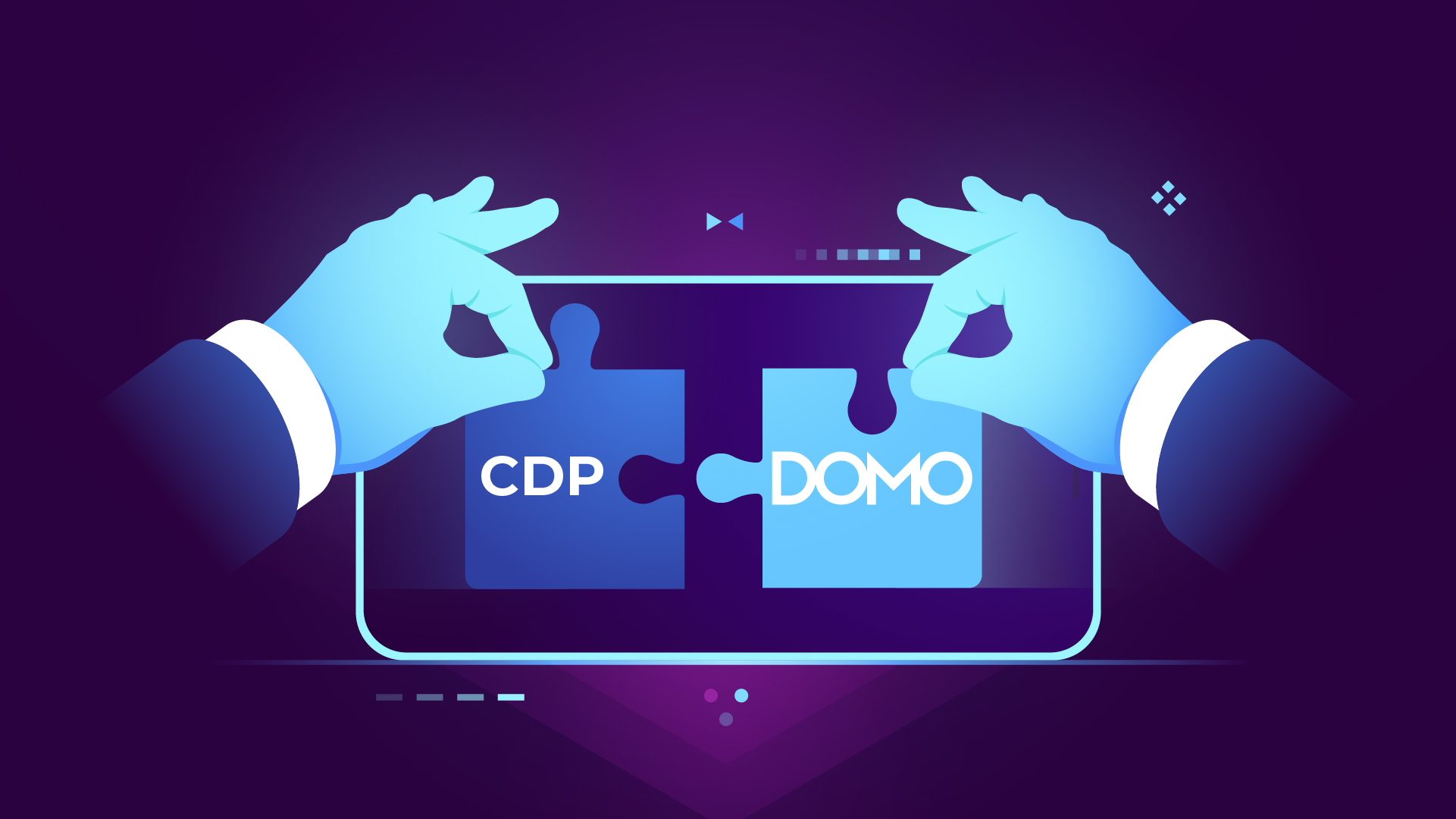Integrating Data for Your Customer Data Platform with Domo

In my last post I outlined a 5-layer conceptual architecture for your Customer Data Platform (CDP). I reiterated that a CDP program should be viewed as a way to achieve closed-loop analytics for your enterprise, not just a centralized data store.
In this blog, I’ll outline the core foundation of all Customer Data Platforms – a unified data repository enabled by a dynamic enterprise data integration framework. I’ll highlight a few salient items to keep in mind to ensure the resiliency of your technology and data architecture.
I’ll use the Domo integration cloud to illustrate the principles of not only populating the target repository but also updating the original sources with enhanced information coming back from the repository.
As a partner of Domo, Ignitho is partnering with clients on their digital transformation journeys. We also partner with Micrsosoft and AWS for Domo implementations. While there are overlapping and overlapping technology offerings from each, this blog focuses on Domo and brings out our philosophy on how to ultimately enable closed loop analytics for your enterprise.
The Core Foundations
When we think of a CDP, we immediately think of the various data integrations we will have to build in order to get the data from various source systems into the central data repository we call our CDP.
As part of that journey, we must tackle data reconciliations, data quality because of inconsistencies, differences in real-time versus batch feed, and so on. Since most of us have undertaken this challenge so many times, a robust methodology has been built up around it. Domo too offers a comprehensive collection of quality integrations and provides several advantages as well.
ETL, for instance, is easier with Domo’s magic ETL. The drag-and-drop capability needs no technical skills thus effectively enabling business-led teams. The SQL Based ETL is also provided to go the extra mile where intricacies are to be explored and handled.
There are often linkages between different datasets. Domo’s data lineage analysis capabilities allow users to see the cascading impacts of changes in a dataset.
Domo also allows data governance to be taken off the technical task list with capabilities to
- Capture and audit all auditable formats
- Build, schedule and automate jobs to eliminate downtime
- Scale infra on demand, up and down
- Certify the content of datasets through customizable workflows
Finally, federated data connectors allow us to access data directly where it is stored instead of needing to build or use additional cloud connections.
Building on the Foundation – The Enterprise Integration Framework
The CDP is not just a destination of the data to enable analytics. It also starts serving as a single source of truth for the enterprise. In addition, it is the perfect place where we can do enrichment of data and feed it to the other systems that need the enriched information.
One of the key capabilities that an organization needs to create an enterprise data fabric where applications can plug in to not only feed data in, but also to pull out (or receive by push) relevant information.
This is provided by the Domo Integration Cloud.
For instance, a common challenge is to combine data sources and extract analytics out of it. Domo’s pipelines make it a breeze to perform this activity, without the need to write a single line of code.
The core aspects of data quality – accuracy, consistency, compliance, and relevance – are enforced in the integration process to ensure quality gates are in place. Once they are set up, the quality of insights generated from the CDP is high. Thus, insights are more reliable, create a higher ROI on business investments, and deliver the intended benefits in an accelerated period. There is also a reduced need to perform manual data governance activities thus reducing costs overall
Summary
I hope this blog was useful in understanding the data integration layer of the CDP. The Domo integration cloud makes it easy to not only create your CDP, but also to create a responsive, enterprise integration layer.
In my next blog, I will highlight how we should be thinking about enabling business intelligence reporting and visualization of the data in the CDP.
If you would like to discuss your CDP roadmap and technology fitment, please get in touch.